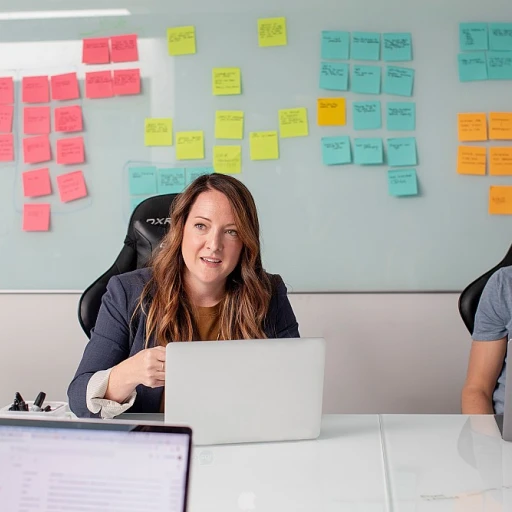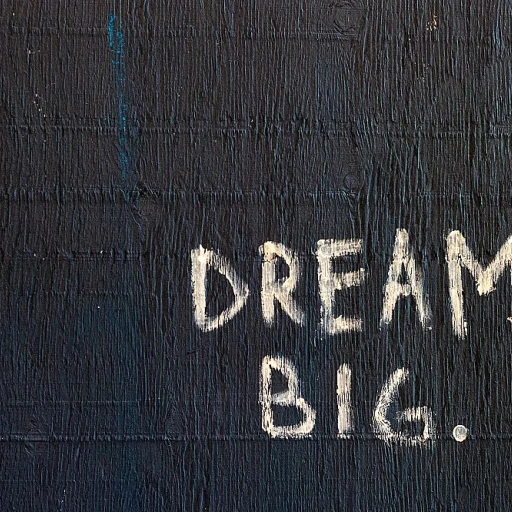The Evolution of COVID Pay Policies
Tracing the Journey of COVID-19 Pay Laws Over Time
The landscape of COVID-19 pay policies has shifted considerably since the pandemic's onset, reflecting changes in the public health landscape and the evolving needs of employees and employers alike. Initially, the focus was on urgent responses to support those in isolation due to quarantine mandates or mandatory precautionary measures. States, including New York, quickly implemented temporary leave policies to provide immediate relief. These laws primarily centered around granting workers access to paid sick leave and paid family leave to care for themselves or family members, infected with or exposed to COVID-19.
As time progressed, leave laws adapted to better meet the challenges posed by the pandemic. For example, some policies began to cover vaccination periods, extending the scope of paid sick days beyond just illness or quarantine isolation. In certain cases, employees were entitled to receive a percentage of their average weekly wage during these leaves, enhancing the financial stability of their households.
In New York, specific regulations were established to guide employers in managing COVID-19 leave. Lawmakers in New York State mandated that employers provide varying levels of paid leave based on their budget and workforce size. This complex framework aimed to balance employee health and safety with the financial realities faced by businesses during the pandemic's economic fallout.
Understanding these evolving policies provides context for their current state and future directions. Stakeholders, from employees to employers, continue to grapple with these regulatory changes. In doing so, they contribute to a broader discussion about how to navigate the compensation and benefits landscape moving forward, as detailed in subsequent sections of this article.
Current COVID Pay Regulations in New York
Understanding Current Regulations
The COVID pay landscape in New York showcases a dynamic blend of regulations designed to safeguard both employees and employers in these challenging times. The state has enacted specific laws to address the unique circumstances of this public health crisis. Crucially, understanding these regulations helps both parties navigate the aftermath of the pandemic. New York State's approach to COVID pay has elements that touch on multiple factors, including paid sick leave, mandatory quarantine, and family leave. Notably, the COVID-specific leave law mandates that employers provide paid sick leave for employees under quarantine or isolation orders. This ensures employees can prioritize health without sacrificing income. Depending on the size and budget of the employer, this compensation can range from 5 to 14 days of paid leave. In addition to COVID-specific provisions, New York has placed emphasis on comprehensive employee support through its pre-existing paid family leave laws. This means employees can use this time for their own health needs or to care for a family member affected by COVID. New York State-level rules ensure employers provide paid leave in the context of the broader public health environment. The intertwined nature of federal and state laws requires close attention. New York builds on the Family and Medical Leave Act, adding layers of local specificity for COVID-19 cases. Businesses are tasked with analyzing these regulations to avoid potential legal pitfalls, while ensuring their employees are well-supported during quarantine isolation and other COVID-related events. Employers and employees should be aware of the budgeting implications as they manage paid and COVID sick leave in a tight job market where workplace safety and employee health are paramount. For a more comprehensive understanding of these labor laws and how they affect compensation and benefits, you can explore our detailed insights here. In summary, the active response by New York highlights the importance of balancing employee rights with employer capabilities to foster a more resilient labor market in the face of unprecedented challenges.Impact on Employees and Employers
Influence on Workforce and Management
The implementation of COVID pay regulations in New York has had a considerable impact on both employees and employers. With the evolving nature of COVID pay policies, the goal has been to protect employees’ rights while ensuring that companies can manage their budgets effectively. For employees, the provision of paid sick leave, COVID leave, and paid family leave has been crucial. The law mandates that if an employee is under an order of quarantine or isolation due to COVID, they are entitled to specific days of paid sick leave, depending on the size of the employer. This ensures that employees do not face financial hardship if they need to isolate or care for a family member. Employers in New York are required to provide these benefits as part of their legal obligation. With the regulations specifying varying levels of support based on company size, it puts pressure on employers to manage their budgets while complying with the state's mandates. Employers must adjust to the paid sick leave requirements and the challenges of maintaining productivity when employees utilize this leave. The impact is felt keenly on both sides. Employees benefit from the security that comes with having access to COVID-specific paid leave options, but employers often face the challenge of filling workforce gaps and managing increased payroll costs. Nonetheless, this balance is crucial for maintaining public health standards and ensuring the safety of communities during the pandemic. Navigating these regulations requires thoughtful consideration from both employees and employers. For employers, understanding the payroll processes, like the direct deposit enrollment process, can aid in managing the financial aspects of these compliance requirements effectively. Such understanding is vital as companies continue to navigate compensation and benefits post-COVID.Comparing COVID Pay Across States
Comparing COVID Pay Across Different U.S. Jurisdictions
Understanding how COVID pay policies differ across states can help both employees and employers navigate the complexities that arise from the pandemic-driven changes in workplace regulations. While we have previously discussed the current COVID pay regulations in New York, it’s insightful to compare these with policies in other states to gain a broader perspective. In states like New York, legislation provides a comprehensive framework for addressing COVID-related absences, such as paid sick leave and quarantine isolation. New York's laws require employers to provide COVID leave under certain conditions, like mandatory or precautionary quarantine orders. The extent of paid leave often depends on the size of the business and its budget. Meanwhile, other states handle COVID pay with less stringent guidelines. Some states offer more generalized sick leave policies without specific allocations for COVID-related absences. For instance:- California: Offers Supplemental Paid Sick Leave for COVID, which requires employers to provide leave for quarantine or isolation due to exposure.
- Texas: Leaves COVID-specific pay largely to the discretion of employers, without mandated state-wide provisions.
- Florida: Also adopts a more laissez-faire approach, leaving it up to employers to decide on compensatory measures.
Future of COVID Pay: Predictions and Trends
Predicting the Future of COVID Pay: Emerging Trends and Insights
The landscape of compensation and paid leave established during the COVID-19 pandemic continues to evolve. As we consider the future of COVID pay regulations, several trends and predictions stand out, shedding light on the potential shifts in how both employees and employers might navigate work-related health crises in the coming years. Firstly, there is a significant likelihood that paid leave policies, particularly in relation to health emergencies, could become more standardized across the United States, drawing on frameworks established during the pandemic. This standardization could ease the burden on employers by clarifying expectations and enabling them to better allocate budgets for such contingencies. As state regulations, like those seen in New York, evolve, they may serve as models for other states looking to implement or revise their own COVID-related leave laws. As we move forward, the need for flexibility in dealing with quarantine and isolation periods becomes more pronounced. Employers are increasingly providing paid sick leave options that are adaptable to various public health mandates. This trend not only reflects a learning from recent experiences but also demonstrates a shift toward employee-centric paid leave practices. Moreover, there's a growing recognition of the role of mental health in the workplace. Paid leave policies are likely to expand to accommodate mental health needs, acknowledging the impact of long quarantine or isolation periods on employees' well-being. By fostering an environment where employees feel supported, businesses aim to maintain morale and productivity. Finally, as remote and flexible work arrangements continue beyond the pandemic, the traditional view of "sick days" might transform into "health days," encompassing broader health concerns beyond physical illness. Employers could redefine paid time off to incorporate preventive health measures, supporting the overall wellness of their workforce. In summary, while the trajectory of COVID pay may still be unfolding, the trends undermining its development are clear. Employers and employees in New York and beyond are poised to see more robust, equitable, and adaptable compensation systems that reflect the lived realities of the past few years.Navigating Compensation and Benefits Post-COVID
Adapting to Post-COVID Compensation and Benefits
The landscape of compensation and benefits in New York, particularly in light of COVID-19, continues to evolve. As businesses and employees navigate the aftermath of the pandemic, understanding the changes in leave policies and regulations becomes essential. Employees in New York now have a clearer understanding of their entitlements when it comes to paid sick leave, especially during cases of quarantine or illness, a development that stems from the dynamic response to public health needs. With the current leave law allowing for paid family and sick leave, both employers and employees must remain aware of their rights and responsibilities. Regulations around paid sick leave in New York State mandate that employers provide adequate leave to those affected by illness, and ensure that time off is covered in compliance with state regulations. ### Key Considerations for Employers and Employees- Understanding leave entitlements: It is crucial for both parties to be familiar with New York's leave law which outlines the provisions for COVID-related sick leave and paid family leave.
- Budgeting and planning: Employers need to manage their budgets to accommodate these paid leaves within their financial planning, ensuring that employee rights are respected without compromising business operations.
- Health and safety compliance: Adhering to mandatory precautionary measures is vital, especially when employees are under order quarantine or isolation. Employers must ensure these measures are aligned with state laws to avoid compliance issues.
- Communication and support: Post-COVID, clear communication between employees and employers is key to navigating expectations and responsibilities when it comes to paid sick leave and other employee benefits.










